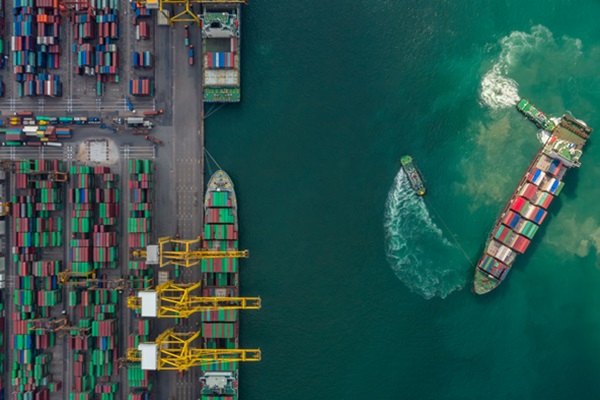.png)

Ajay Srivastava, founder of Global Trade Research Initiative, is an ex-Indian Trade Service officer with expertise in WTO and FTA negotiations.
August 17, 2025 at 4:09 PM IST
A GTRI research, using a whistleblower tipoff, on the Duty-Free Import Authorisation Scheme has laid bare the modus operandi being used by importers to bring in high-value and high import duty goods avoiding large customs duties.
The DFIA scheme, run by the Directorate General of Foreign Trade, lets exporters import raw materials without paying customs duty—on the condition that these inputs are genuinely used in the production of exported goods. The licence is based on pre-approved input norms, which define what can be imported for each export product. However, once exports are completed, these licences can be transferred to others.
While the DFIA scheme is intended to lower input costs for genuine exporters, its structure leaves significant room for misuse. The primary vulnerability lies in the vague and overly broad descriptions permitted under Standard Input Output Norms, which allow importers to claim duty-free entry for high-value items not actually used in export production.
Once a DFIA licence is issued—importers can import unrelated goods like whey protein, olive oil, or lithium-ion batteries even though these were never used in the exports products. The risk is further amplified by the judicial interpretations that prioritise licence language over real-world use.
Scheme and Scheming
In multiple export categories such as biscuits, pickles, and cotton made-ups, exporters have exploited vague import descriptions under SION to bring in expensive, high-duty items that are unrelated to actual production.
For instance, biscuits typically use milk powder in their recipe. However, the SION entry allowed the broader category of milk products, enabling imports of whey protein concentrate and whey powder under classification as milk and milk products — items of higher value and little to no relevance in standard biscuit-making. Similarly, in confectionery items where the actual input is specific artificial chemical compound for flavours, the allowed description “Food Flavours” was used to import saffron, which are significantly more expensive and not standard for basic sugar-based candies.
Snack foods, which rely on palm oil, have seen imports of specialty fats and hydrogenated oils under the vague category of “margarine.” Likewise, processed food exports that typically use starch were linked to the overly broad “carbohydrates and derivatives” category, justifying imports of maltodextrin and high-fructose corn syrup, which are not core ingredients.
In dietary supplements, gelatin was substituted by imports of high-end collagen peptides and whey protein isolate under the permitted term “protein and protein derivatives.” For biscuit exports again, the legitimate input of wheat or oat bran was misrepresented under the general label “fibre,” opening the door for imports of walnuts, a premium product entirely disconnected from the core recipe.
Other categories show similar misuse. Leather processing, which requires tanning agents, was linked with the term “chemicals for leather processing” to justify imports of high-value dyes and specialty coatings. Pharmaceutical capsules that need gelatin were covered under “gelatin and derivatives,” facilitating the import of hydrolyzed collagen, typically used in cosmetics, not pharmaceuticals. Most bizarre is duty free import of high value currency printing ink (OVI) against exports of rice in printed gunny bags. The argument for such bizarre import is once again introduced legally by customs circular 20/25 dated 24/07/2025.
In all these cases, the court-sanctioned reliance on paperwork rather than actual use allowed exporters to misuse import licences, facilitating duty-free imports of unrelated, high-value inputs not needed for the corresponding export products.
In March 2025, a public notice quietly removed walnuts from Appendix 4J’s “first import list”—a list that required sensitive items to be imported before exports essentially preventing from imports under DFIA scheme which requires prior exports. This safeguard ensured real consumption in production. Its removal now allows post-export DFIA misuse with no scrutiny.
Walnuts, which attract 100% BCD and are not used in biscuit production, are now being imported duty-free using DFIA licences procured post-export. Several recent DRI investigations into undervaluation of walnut imports corroborate that this is already a sensitive item.
Modus Operandi
The fraud begins at the SION fixation stage, where DGFT approves generic descriptions like “milk and milk products” or “fats and oils” instead of precise terms like “skimmed milk powder” or “mustard oil”. These vague entries serve as the first legal loophole exploited by fraudsters. For instance, biscuits that may contain milk powder are linked to the import of whey protein concentrate, which is neither used in their manufacture nor justified by any ingredient list.
Instead of flagging misdeclared shipping bills, some Customs officers reportedly clear these entries without question. Importers present these clearances in court as proof of procedural validity if needed.
When upright custom officers do question these imports, fraudsters head to selected benches of Customs tribunals or courts, where judgments often rely on: Past acceptance by DGFT or Customs, Vague SION definitions, Transferability of DFIA licences.
In multiple judgments, the courts have explicitly stated that actual use of the imported item is irrelevant if the item fits within the licence description—a position that completely defeats the intent of the scheme.
In a very recent disturbing development, Customs Circular No. 20/2025-Cus dated 24th July 2025 has now instructed that correlation between import and export need not be established unless the item falls under Para 4.29 of the Foreign Trade Policy which lists items such as Steel Alloys, Insecticides, Synthetic Solvents etc.
This confirms what whistleblowers had long suspected—that upright Customs officers were actively resisting duty-free import of unrelated items. Instead of supporting this vigilance, the circular overrides it, offering a procedural greenlight to misuse licences with generic input terms like “milk products” or “fibre.”
Instead of reinforcing scrutiny, the circular neuters enforcement - essentially institutionalizing the misuse that the DFIA cartel thrives on.
The Cover
A pattern of rulings from courts and tribunals has contributed to the misuse of India’s DFIA scheme.
The core idea behind DFIA is simple: allow exporters a transferable instrument as a post export scrip to allow import of raw materials without paying customs duties—but only if those materials are actually used in making the exported product. However, the logic used in court rulings in several cases has gradually eroded this key requirement, turning the scheme into a legal route for unrelated, high-value imports.
In many judgments, courts have held that if an item is listed in the DFIA licence—even vaguely—there’s no need to prove it was actually used. This has allowed expensive high-duty goods like whey protein, olive oil, walnuts and li-ion batteries to be imported duty-free against exports of everyday products like biscuits, pickles, and tractors where these inputs are clearly irrelevant. The courts focused only on what was printed on the licence, ignoring whether the import made any practical sense.
Another repeated error has been the acceptance of vague and broad terms in the licence, such as “milk products” or “vegetable fats.” These categories are so loosely defined that they allow importers to bring in a wide range of unrelated items. Instead of demanding clarity, court ruling allowed the use of these vague terms to justify duty-free imports of high-end ingredients with no clear role in the final exported goods.
In some cases, courts even argued that if an imported item could potentially be used in the export product, that’s good enough—even if it was never actually used. For instance, lithium-ion batteries were allowed under licences linked to the export of tractors, even though the tractors used lead-acid batteries. In another case the custom tribunal allowed Optically Variable Ink (OVI), used for printing Indian Currency against export of rice sacks. This kind of reasoning—based on theoretical possibility instead of actual usage—undermines the policy’s basic purpose.
Additionally, courts ruled that if a DFIA licence is transferred from the original exporter to another trader, the new holder doesn’t have to prove how the imported goods were used. This opens the door for licence trading, where duty-free imports are made by people who had nothing to do with the original export, and without any accountability.
Finally, some court rulings said that once an export is completed and the licence is issued, there is no need to verify how or whether the imported goods were used. This eliminates all checks at the most critical stage—after the export is done but before the imports are cleared—creating a perfect opportunity for misuse. Instead of reliance on actual utilization and classification, the reliance on judgements is on semantic gymnastic.
In all of these rulings, one pattern stands out: court rulings have prioritized form over substance. They’ve focused more on what’s written on paper than on the real-world connection between import and export. This has allowed a small group of traders to import unrelated, high-value items duty-free, hurting public revenue and giving themselves an unfair edge over genuine exporters.
It’s clear that the legal reasoning used in these cases has moved away from the true spirit of the DFIA scheme. Instead of ensuring that duty exemptions go only to materials that are essential to export production, these rulings have helped turn DFIA into a loophole for backdoor imports. If left uncorrected, this will continue to erode the credibility of India’s export policies and disadvantage the businesses that follow the rules.
The Cartel
At the center of this elaborate fraud is a group of 10–15 traders and importers operating primarily from Mumbai, Delhi, and Hyderabad. These players reportedly: Buy DFIA licences from exporters at a premium, Use benami companies to hide identities, Maintain deep ties with insiders in DGFT and Customs and Use tribunal precedents to block enforcement attempts.
New evidence suggests the cartel has gone beyond exploiting loopholes—they are now influencing policy directly. The amendment in 2025 to Appendix 4J by DGFT and issuance of Customs Circular 20/2025-Cus align perfectly with the cartel’s business model. Sources confirm these changes were initiated at the behest of specific licence traders.
The scale and consistency of these operations suggest a well-entrenched cartel that functions more like a trade mafia than a set of independent players.
What If
If this loophole-ridden misuse of the DFIA scheme is allowed to continue in its current form, it risks undermining the credibility of India’s export incentive system and could push honest exporters out of the market.
To fix the problem, the government must take urgent action. This includes:
- Creating a clear list of high-value items, over 100 items to begin with, being wrongly imported duty-free, such as whey protein and olive oil, under the guise of export-linked benefits.
- Imports of these high duty items under DFIA licences should be temporarily suspended until a full review is completed.
- The vague input descriptions in the official norms must be rewritten to clearly reflect only the actual raw materials used in production.
- A thorough audit should be conducted of all DFIA licences issued for these products over the past five years.
- The government must also recover the evaded customs duties and tighten the scheme by limiting its use to lower-duty inputs, specifically those with basic customs duty of 10% or less.
- Limiting DFIA benefit to inputs attracting maximum 10% basic customs duty
The DFIA scheme was designed to support exporters by reducing input costs, and it still is a very important tool for exporters. The transferability nature of the scheme has given rise to a cartel of traders who have abused this scheme and created a parallel channel for backdoor imports of unrelated goods. What’s been exposed is not merely procedural lapse—it’s systemic sabotage of policy by those meant to enforce it.
It is time for the government to act decisively—before this fraud, and its judicial justification, becomes too deeply rooted to undo.
(Views are personal and based on a whistleblower tipoff and GTRI research into the DFIA scheme)




